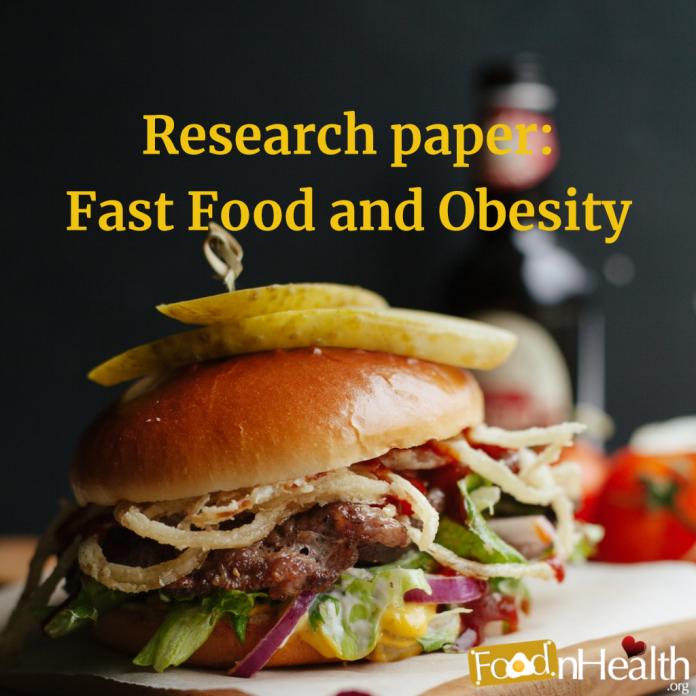This guide provides useful tips about how to complete a research paper about fast food and obesity relation. Make allowances for the following tips:
- Preliminary research.
- Composing an outline.
- Drafting and editing.
- Proofreading.
Tip #1
Before you begin to write, you should take certain preliminary steps. Your first aim is to choose a proper topic. We already have the direction. It is fast food and obesity. However, you cannot simply write on whatever occurs to your mind. Your topic must be relevant, dwell on a currently important issue that isn’t yet solved and requires some clarifications. To choose the right theme, you should undertake the next steps borrowed from custom research proposal writing service and its team of highly skilled academic writers:
- Brainstorm for ideas. Imagine that you have a tree. It’s the core of your paper. Its branches are all possible ideas associated with your topic. Make the picture filling in the gaps. These may be causes for obesity, consequences of excess weight, the ingredients of fast food, how fast food affects our body and so on.
- Find proper literature. Surf the Internet and visit local libraries to get the necessary data. Make sure you can trust the sources you find (especially the electronic ones). It’s necessary to understand what you are going to use. Accordingly, attentively read every source and make notes. Refine the list of the found sources.
- Outline what’s important. You should clearly realize what you can use out of the literature you’ve found. Make a list of keywords, such as fast food, health issues, relation to obesity and similar ones. You should be flexible.
- Formulate a thesis statement. Depending on the facts you have found, you will define what thesis statement you need. You should be totally sure that the literature sources you have will help to fully cover the chosen topic. Make sure they have enough data to do that. Afterward, form the thesis.
You should choose something related to obesity and fast food consumption. However, it’s too broad and you should concretize it. For example, you may select the following topic “The Relation between Obesity and Fast Food”. It is relevant for the modern society and focuses on an important problem. If you can prove that there is a dangerous link, you may receive funds to initiate a project that will help to conquer this issue.
Use these tips to select a strong topic.
Tip #2
The next phase is to create an outline. It is an important phase because it organizes your work. It keeps the main points you should fulfill to complete your research proposal. Commonly, it has the following parts:
- Introduction. It explains the main purpose of your study and includes a thesis statement. Mention why this area and the concrete question are so significant.
- Literature review. Provides an overview of studies and researches that already exist. Give a brief summary about what you already know, discuss the most important studies in this area, clarify why they are worth your attention, and choose at least one question that you might like to study too.
- Rationale. Gives an enumeration of questions you are going to explore in your research. In your case, these are a relation between fast food and obesity, possible negative consequences, the main factors that lead to problems, etc.
- Method and design. This part represents how you collected information and explored the main questions. It’s remarkable that you are not obliged to come up with something new and unique. Of course, if you find a new approach of data collection and analysis you would earn additional grades and fame. Nonetheless, you are welcome to use well-known methods. This part is divided into 4 sub-parts. These are: method, design, procedure and analysis.
- Conclusion. Gives a brief interpretation of the outcomes you’ve managed to receive.
- References. The quotes and links to information sources are composed in accordance with APA style. Sometimes, it may be MLA or some other.
Mind that the structure and some points of this outline may vary from one institution to another. Nonetheless, it’s a common template of an outline.
Tip #3
After you have data and plan, begin to write. Don’t try to write everything at once. Draft first, revise your copies and only then submit. Use examples and statistics to prove your hypothesis. You may write the following examples “In 1960, obesity among adult in the US was at 13.6%. The Centers For Disease Control confirmed that this number increased up to 34% in 2006. During this period, the number of people who consumed fast food sufficiently increased too.”
You should also edit your drafts. It’s necessary to stick to certain rules and avoid mistakes.
- Use the third-person perspective.
- Avoid too many unfamiliar words and terms.
- Avoid clichés.
- Break too long sentences into shorter ones.
- Avoid abbreviations.
An additional tip is to never edit soon after you finish your drafting. Unwind and come up with a fresh approach.
Tip #4
You should check whether your text doesn’t have some errors. Use supporting applications and programs to testify the entire text. There are such useful tools as Grammarly, The Hemingway Editor, Wordcounter, Prowritingaid, etc. Use these applications to purify your paper.


























